Hikoki D 6SH Handleiding
Hikoki
Boormachine
D 6SH
Bekijk gratis de handleiding van Hikoki D 6SH (61 pagina’s), behorend tot de categorie Boormachine. Deze gids werd als nuttig beoordeeld door 7 mensen en kreeg gemiddeld 4.7 sterren uit 4 reviews. Heb je een vraag over Hikoki D 6SH of wil je andere gebruikers van dit product iets vragen? Stel een vraag
Pagina 1/61

Handling instructions
Bedienungsanleitung
Mode d’emploi
Istruzioni per l’uso
Gebruiksaanwijzing
Instrucciones de manejo
Instruções de uso
Bruksanvisning
Brugsanvisning
Bruksanvisning
Käyttöohjeet
Οδηγίες χειρισμού
en
de
fr
it
nl
es
pt
sv
da
no
fi
el
D 6SH
en
de
fr
it
nl
es
pt
sv
da
no
fi
el

2
English (Original instructions)
c) Prevent unintentional starting. Ensure the
switch is in the off -position before connecting
to power source and/or battery pack, picking up
or carrying the tool.
Carrying power tools with your fi nger on the switch
or energising power tools that have the switch on
invites accidents.
d) Remove any adjusting key or wrench before
turning the power tool on.
A wrench or a key left attached to a rotating part of
the power tool may result in personal injury.
e) Do not overreach. Keep proper footing and
balance at all times.
This enables better control of the power tool in
unexpected situations.
f) Dress properly. Do not wear loose clothing or
jewellery. Keep your hair and clothing away
from moving parts.
Loose clothes, jewellery or long hair can be caught in
moving parts.
g) If devices are provided for the connection of
dust extraction and collection facilities, ensure
these are connected and properly used.
Use of dust collection can reduce dust-related
hazards.
h) Do not let familiarity gained from frequent use
of tools allow you to become complacent and
ignore tool safety principles.
A careless action can cause severe injury within a
fraction of a second.
4) Power tool use and care
a) Do not force the power tool. Use the correct
power tool for your application.
The correct power tool will do the job better and safer
at the rate for which it was designed.
b) Do not use the power tool if the switch does not
turn it on and off .
Any power tool that cannot be controlled with the
switch is dangerous and must be repaired.
c) Disconnect the plug from the power source and/
or remove the battery pack, if detachable, from
the power tool before making any adjustments,
changing accessories, or storing power tools.
Such preventive safety measures reduce the risk of
starting the power tool accidentally.
d) Store idle power tools out of the reach of
children and do not allow persons unfamiliar
with the power tool or these instructions to
operate the power tool.
Power tools are dangerous in the hands of untrained
users.
e) Maintain power tools and accessories. Check
for misalignment or binding of moving parts,
breakage of parts and any other condition
that may aff ect the power tool s operation. If ʼ
damaged, have the power tool repaired before
use.
Many accidents are caused by poorly maintained
power tools.
f) Keep cutting tools sharp and clean.
Properly maintained cutting tools with sharp cutting
edges are less likely to bind and are easier to control.
g) Use the power tool, accessories and tool bits
etc. in accordance with these instructions,
taking into account the working conditions and
the work to be performed.
Use of the power tool for operations diff erent from
those intended could result in a hazardous situation.
GENERAL POWER TOOL SAFETY
WARNINGS
WARNING
Read all safety warnings, instructions, illustrations and
specifi cations provided with this power tool.
Failure to follow all instructions listed below may result in
electric shock, fi re and/or serious injury.
Save all warnings and instructions for future reference.
The term “power tool” in the warnings refers to your mains-
operated (corded) power tool or battery-operated (cordless)
power tool.
1) Work area safety
a) Keep work area clean and well lit.
Cluttered or dark areas invite accidents.
b) Do not operate power tools in explosive
atmospheres, such as in the presence of
fl ammable liquids, gases or dust.
Power tools create sparks which may ignite the dust
or fumes.
c) Keep children and bystanders away while
operating a power tool.
Distractions can cause you to lose control.
2) Electrical safety
a) Power tool plugs must match the outlet. Never
modify the plug in any way. Do not use any
adapter plugs with earthed (grounded) power
tools.
Unmodifi ed plugs and matching outlets will reduce
risk of electric shock.
b) Avoid body contact with earthed or grounded
surfaces, such as pipes, radiators, ranges and
refrigerators.
There is an increased risk of electric shock if your
body is earthed or grounded.
c) Do not expose power tools to rain or wet
conditions.
Water entering a power tool will increase the risk of
electric shock.
d) Do not abuse the cord. Never use the cord for
carrying, pulling or unplugging the power tool.
Keep cord away from heat, oil, sharp edges or
moving parts.
Damaged or entangled cords increase the risk of
electric shock.
e) When operating a power tool outdoors, use an
extension cord suitable for outdoor use.
Use of a cord suitable for outdoor use reduces the
risk of electric shock.
f) If operating a power tool in a damp location
is unavoidable, use a residual current device
(RCD) protected supply.
Use of an RCD reduces the risk of electric shock.
3) Personal safety
a) Stay alert, watch what you are doing and use
common sense when operating a power tool.
Do not use a power tool while you are tired
or under the infl uence of drugs, alcohol or
medication.
A moment of inattention while operating power tools
may result in serious personal injury.
b) Use personal protective equipment. Always
wear eye protection.
Protective equipment such as a dust mask, non-skid
safety shoes, hard hat or hearing protection used for
appropriate conditions will reduce personal injuries.

3
English
h) Keep handles and grasping surfaces dry, clean
and free from oil and grease.
Slippery handles and grasping surfaces do not
allow for safe handling and control of the tool in
unexpected situations.
5) Service
a) Have your power tool serviced by a qualifi ed
repair person using only identical replacement
parts.
This will ensure that the safety of the power tool is
maintained.
PRECAUTION
Keep children and infi rm persons away.
When not in use, tools should be stored out of reach of
children and infi rm persons.
DRILL SAFETY WARNINGS
Safety instructions for all operations
a) Hold the power tool by insulated gripping surfaces,
when performing an operation where the cutting
accessory may contact hidden wiring or its own
cord.
Cutting accessory contacting a “live” wire may make
exposed metal parts of the power tool “live” and could
give the operator an electric shock.
Safety instructions when using long drill bits
a) Never operate at higher speed than the maximum
speed rating of the drill bit.
At higher speeds, the bit is likely to bend if allowed to
rotate freely without contacting the workpiece, resulting
in personal injury.
b) Always start drilling at low speed and with the bit tip
in contact with the workpiece.
At higher speeds, the bit is likely to bend if allowed to
rotate freely without contacting the workpiece, resulting
in personal injury.
c) Apply pressure only in direct line with the bit and do
not apply excessive pressure.
Bits can bend causing breakage or loss of control,
resulting in personal injury.
ADDITIONAL SAFETY WARNINGS
1. Make sure to securely hold the tool during operation.
Failure to do so can result in accidents or injuries. (Fig. 6)
2. Ensure that the power source to be utilized conforms
to the power requirements specifi ed on the product
nameplate.
3. Ensure that the power switch is in the OFF position.
If the plug is connected to a receptacle while the power
switch is in the ON position, the power tool will start
operating immediately, which could cause a serious
accident.
4. When the work area is removed from the power source,
use an extension cord of suffi cient thickness and rated
capacity. The extension cord should be kept as short as
practicable.
5. When mounting the drill bit, insert it fully into the drill
chuck and completely tighten the drill chuck with the
chuck wrench.
If mounting is not done porperly, it is very dangerous as
the drill bit may slip or loosen during operation.
6. Do not wear gloves made of stuff liable to roll up such as
cotton, wool, cloth or string, etc.
7. Do not touch the bit during or immediately after
operation. The bit becomes very hot during operation
and could cause serious burns.
8. When placing the drill on the fl oor, make sure that the
drill has stopped completely.
9. Before drilling into a wall, fl oor or ceiling, thoroughly
confi rm that no items such as electric cables or conduits
are buried inside.
10. When working in high position, take care of downword
direction.
11. Pressure
Drilling will NOT be accelerated by placing heavy
pressure on the drill. Such action will only result in a
damaged drill bit, decreased drilling effi ciency, and/or
shortened service life of the drill.
12. When drilling completely through the material:
When the drill bit bores completely through the material,
careless handling often results in a broken drill bit
or damage to the drill body itself due to the sudden
movement of the drill.
Always be alert and ready to release the pushing force
when drilling through the material.
13. Precautions on boring
The drill bit may become overheated during operation;
however, it is suffi ciently operable. Do not cool the drill
bit in water or oil.
14. The stopper rod can be fi xed on whichever side of the
housing.
15. A stopper assembly is not attached to products equipped
with a keyless chuck because the stopper rod would
come into contact with the keyless chuck.
A stopper assembly should never be mounted on any
product equipped with a keyless chuck in disregard of
the above warning because such action could result in a
serious accident.
16. Caution concerning immediately after use
Immediately after use, while it is still revolving, if the Drill
is placed on a location where considerable ground chips
and dust have accumulated, dust may occasionally be
absorbed into the drill mechanism. Always pay attention
to this undesirable possibility.
17. RCD
The use of a residual current device with a rated residual
current of 30 mA or less at all times is recommended.
SYMBOLS
WARNING
The following show symbols used for the machine.
Be sure that you understand their meaning before
use.
D6SH : Drill
To reduce the risk of injury, user must read
instruction manual.
Only for EU countries
Do not dispose of electric tools together with
household waste material!
In observance of European Directive
2012/19/EU on waste electrical and electronic
equipment and its implementation in
accordance with national law, electric tools
that have reached the end of their life must
be collected separately and returned to an
environmentally compatible recycling facility.
V Rated voltage
P Power input
n0No-load speed
Switching ON
Product specificaties
| Merk: | Hikoki |
| Categorie: | Boormachine |
| Model: | D 6SH |
| Kleur van het product: | Black, Green |
| Gewicht: | 900 g |
| Diepte: | 206 mm |
| Stroombron: | AC |
| Stationair toerental (max): | 4500 RPM |
| Boor diameter in staal (max): | 6.5 mm |
| Boor diameter in beton (max): | - mm |
| Boor diameter in hout (max): | 9 mm |
| Aantal versnellingen: | 1 |
| Ingebouwd licht: | Nee |
| Boren: | Ja |
| Spanklauw breedte (max): | 6.5 mm |
| Aanpasbare snelheid: | Nee |
| Klopboren: | Nee |
| Ophangbaar: | Ja |
| Productontwerp: | Boormachine met pistoolgreep |
Heb je hulp nodig?
Als je hulp nodig hebt met Hikoki D 6SH stel dan hieronder een vraag en andere gebruikers zullen je antwoorden
Handleiding Boormachine Hikoki
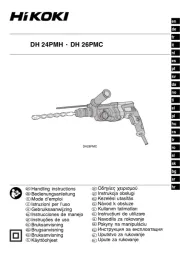
7 December 2024

7 December 2024

7 December 2024

7 December 2024

26 December 2023

29 Augustus 2023

29 Augustus 2023

29 Augustus 2023

29 Augustus 2023

29 Augustus 2023
Handleiding Boormachine
- Fieldmann
- NEO Tools
- Fein
- Eibenstock
- AEG
- Westfalia
- Dedra
- Hilti
- Rikon
- Ecomac
- Proviel
- Elu
- Kraftixx
- Daewoo
- Texas
Nieuwste handleidingen voor Boormachine
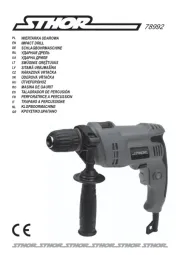
13 September 2025
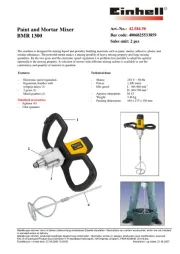
13 September 2025
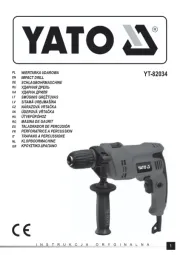
12 September 2025
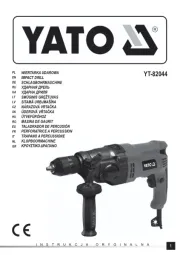
12 September 2025
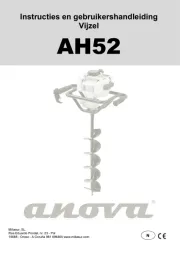
9 September 2025
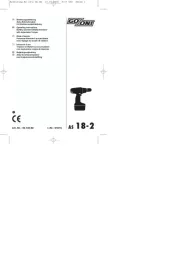
8 September 2025
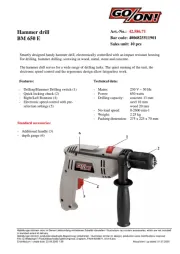
7 September 2025
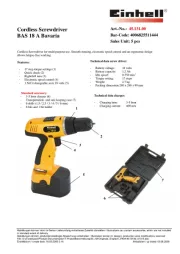
2 September 2025
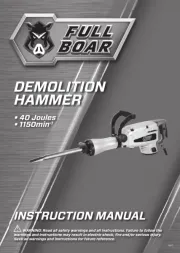
2 September 2025
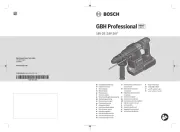
2 September 2025